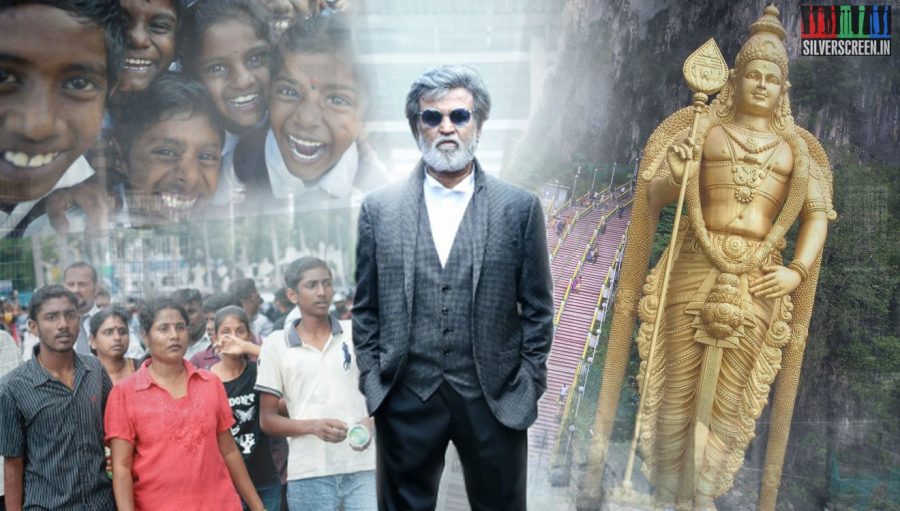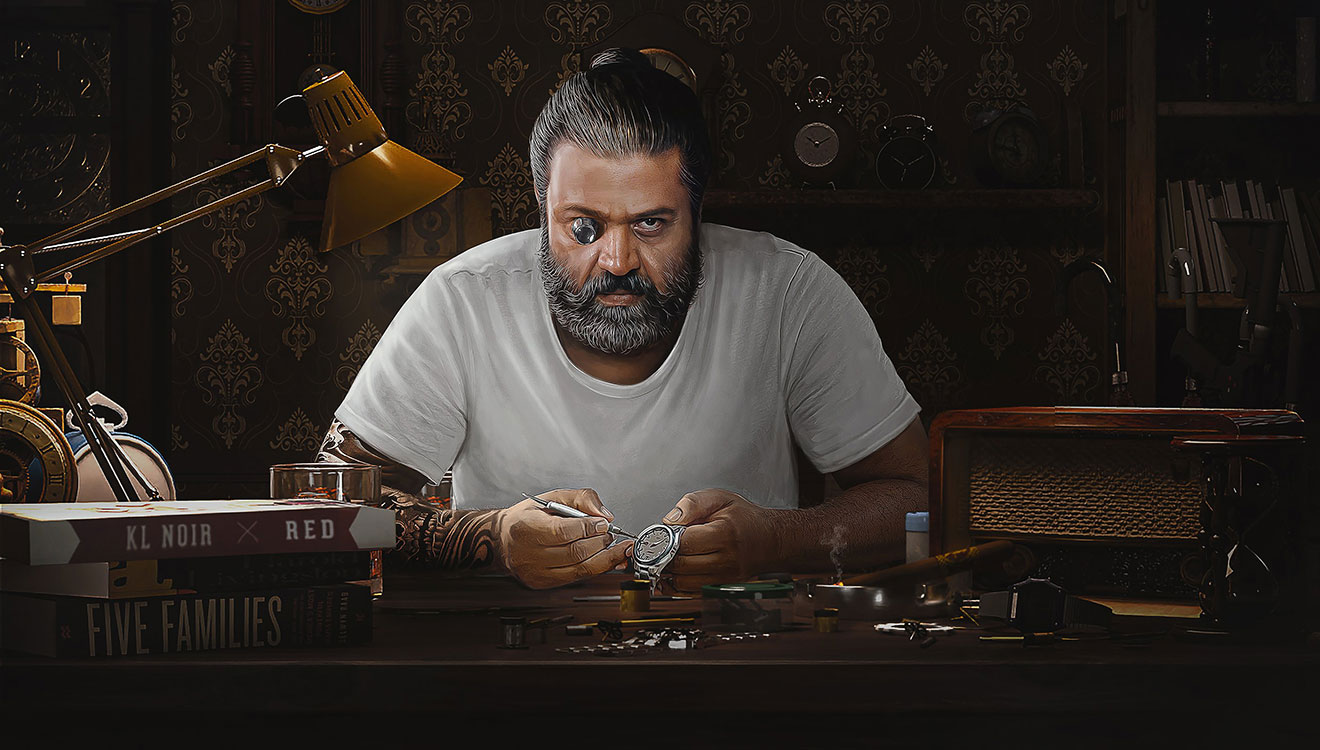In Pa Ranjith’s Kabali, Rajinikanth plays Kabaleeswaran, a Malaysian Tamil man who takes to crime to protect his people. Oppressed, landless, and struggling with inter-generational poverty, for Tamils in Malaysia, the setting of this gangster tale is no work of fiction. It is a way of life.
A century ago, boatloads of Tamilians set sail for nearby Malaya, as slaves of the British Raj. The journey itself was fraught with risks, and many perished. The rest dreamed of a brighter future and better prospects in the jungles of Sabah and Serawak.
This was not to be.
*****
The men, clad in simple dhotis tied around their waists, were put to work at Malaysia’s sprawling rubber plantations. Dense forests and mountains isolated them from the rest of the world. An ocean away from what they held dear, the Tamils spent all their time tapping rubber – slicing tree after tree, retiring only when their British overlord did.
Life on these estates was a torturous experience for most. Seventy-year-old Vell Samy’s ancestors lived and died tapping rubber. His great grandfather migrated to Malaysia in 1901, eager to start a new life. “We have roots in Thirunelveli. From what my thatha used to say, life was terrible in pre-independence Tamil Nadu. There was little to eat, no money – nothing. We are Harijans; for water, my great grandfather had to travel thirty miles everyday as they were not allowed to drink water from the communal pond. He made the decision to take his entire family abroad as life at home became worse. He thought moving to a new country would help.”
Things didn’t turn out that way, for even in Malaya, the caste system flourished. “There’s a saying here. Indians brought with them nothing but caste. And it’s true.” Separate housing was given to the Dalits, away from the rest. Little was done to improve their lives. Without proper medical assistance, many of them succumbed to a variety of diseases, though Malaria was most often the culprit.
As rubber production grew, the demand for cheap labour was higher than ever. Soon, another batch of Tamilians arrived, to slice many more trees. And another, and another, till vast settlements of the people cropped up in many parts of Malaysia. Today, nearly 7% of Malaysians are of Indian origin.
Also, 70% of Malaysia’s gangsters are of Indian origin.
*****
The close-knit Tamil communities in Malaysia tend to be small-scale replicas of the ones in Tamil Nadu. Fiercely protective of their customs and religion, Tamils built a variety of temples in their newfound home. Of these, the Batu Malai temple and the Mariamman Temple are the most popular. Together, they draw up to 10,000 people daily. “Lord Murugan is the protector of the Tamil people. Every year the people in my grandfather’s estate would travel to Batu Malai and offer prayers there. Their requests were small. They often prayed for their health and safety. Now, the world has changed. We need to start asking for change. Our community’s wishes need to be heard!”
Most Malaysian Indians live in crowded tenements in Kuala Lampur. “There is no space to breathe, much less live. But this is how we lived in my grandfather’s time. So it is not that hard. Back then, the jungles closed in on us. Now it is the concrete blocks,” notes Vell Samy.
The Tamil leadership representing their interests at the National level has also failed the community. Clueless, and often bogged down by scandals within their ranks, party men seem focused on promoting their own personal agenda. The interests and aspirations of these oppressed people rarely find representation at the national level.
The community’s declining political leverage at the national level has led to many difficulties. For young Tamil men and women, getting a decent education is nearly impossible. Tamil medium schools are aplenty, but do not prepare them for the job market. College admissions are heavily weighted in favour of the Malays; Tamilians often end up settling for obscure streams in lesser-known colleges. “The alternative is to send them abroad. Here, most people don’t have the money for their next meal. How can they afford a foreign school with its expensive tuition rates?” Samy asks.
*****
Young Tamil men, forced away from the rubber estates they grew up in, and denied an education, increasingly turn to gangs for a living. These men are easy to prey on – gangs typically lure them away with promises of riches and brotherhood. For Malaysian Tamils who’ve grown up in a system that does nothing to help them, such a prospect is hard to walk away from. A gang member is typically paid up to RM 15,000 to peddle drugs. More money comes in the form of extortion and a ‘protection’ fee from local businessmen. “We were in the protection racket. There were many places that we used to pau (extort). We collected a lot of money. So RM101 wasn’t much. But whatever we earned, we would spend on drinking and having fun. It was a wasted life,” says a gang member.
Vell Samy remembers a time when such gangs tried to recruit members from his own family. “Usually, these gangs have people in every neighbourhood. They will go to the houses of young boys without dads, and give them everything they wish. Soon, they will mould them for a life in crime. With young girls too they’ll do the same. They will feed them drugs and get them hooked. It is so they will join their prostitution rings.”
Recommended
The Government, instead of trying to eradicate crime, has focused on coming up with explanations. One popular reason is Tamil cinema. Officials with the Consumers Association of Penang have, on multiple occasions, called for bans on Tamil films and serials.
Many are moving away from their culture in a bid to establish a new life for themselves. According to Dr. M Nadarajah, a Sociology professor at the Stamford College, “the unfortunate direction of change would be the progressive loss of Tamil identity. In this context, we can see for instance a new phenomenon in Malaysia – dark brown-skinned Tamils taking on the behaviour of or, portrayed as, ‘blacks’!”
Kabali shies away from offering a solution to the plight of these people. One thing is clear, though: their fates cannot be decided by the actions of one man, no matter how powerful a gangster he may be.
*****



